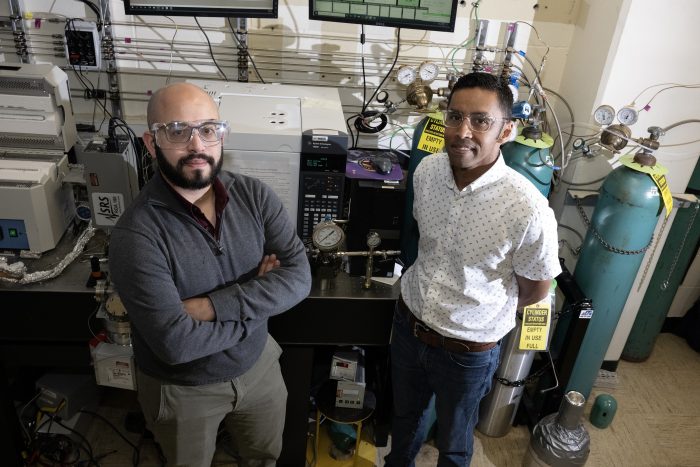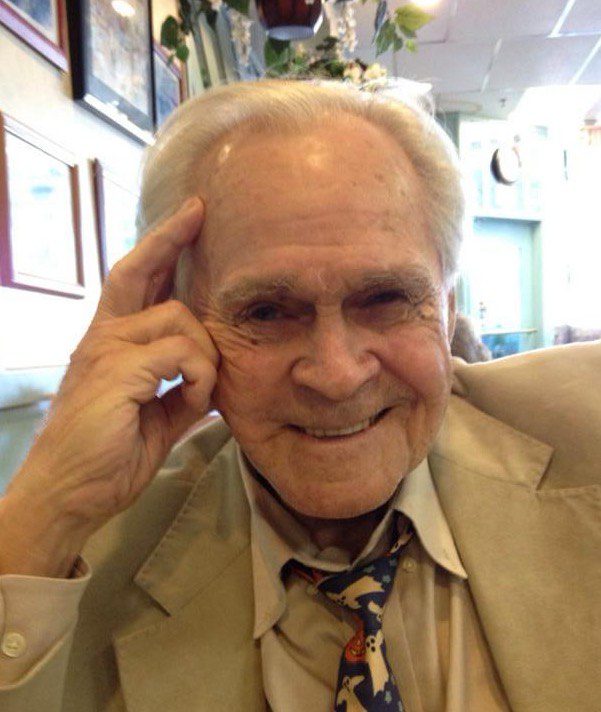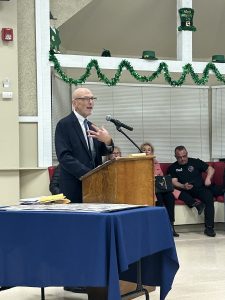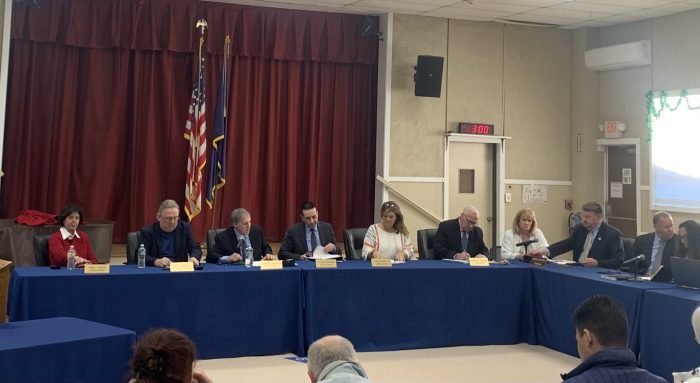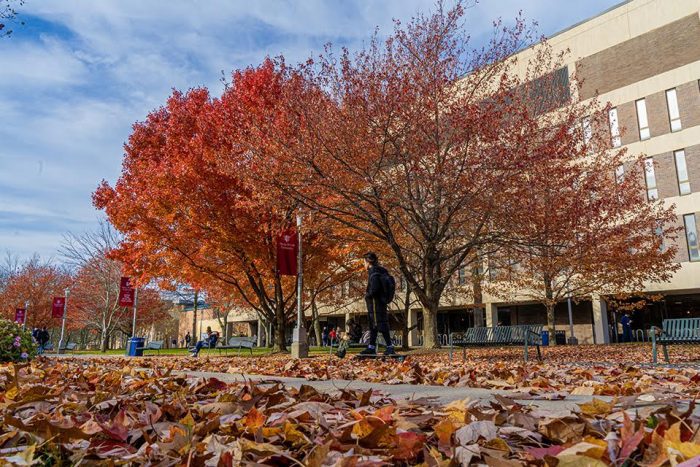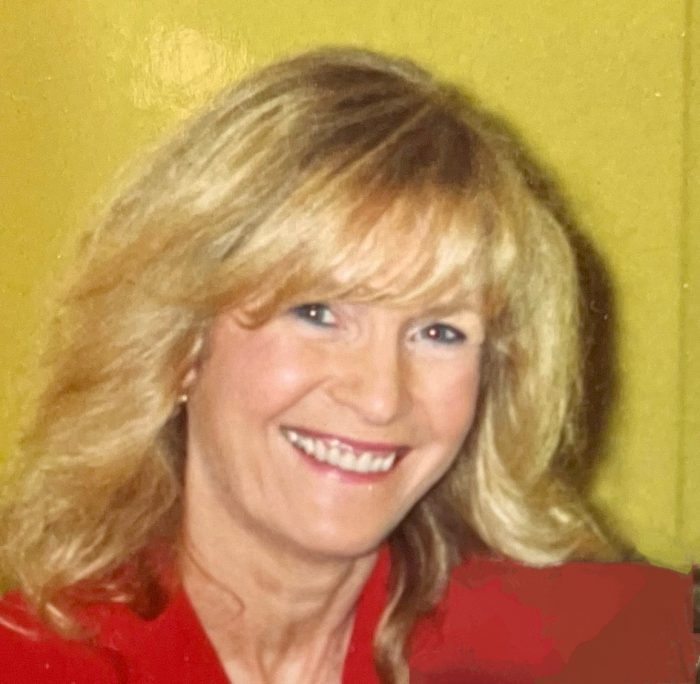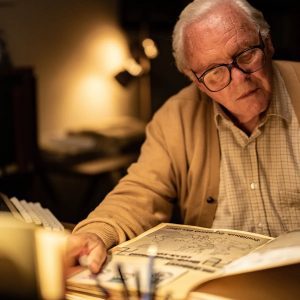By Daniel Dunaief
If we had carbon dioxide glasses, we would see the gas everywhere, from the air we, our pets, and our farm animals exhale to the plumes propelled through the smokestacks of factories and the tail pipes of gas-powered cars.
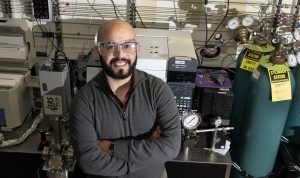
A waste product that scientists are trying to reduce and remove, carbon dioxide is not only a part of the photosynthesis that allows plants to convert light to energy, but it also can be a raw material to create usable and useful products.
Juan Jimenez, a postdoctoral researcher and Goldhaber Fellow at Brookhaven National Laboratory, has been working with carbon dioxide for the last 10 years, in his undergraduate work at CUNY City College of New York, for his PhD at the University of South Carolina and since he arrived at BNL in 2020.
Jimenez contributed to a team led by engineers at the University of Cincinnati to create a way to improve the electrochemical conversion of this greenhouse gas into ethylene, which is an important ingredient in making plastics as well as in manufacturing textiles and other products.
University of Cincinnati Associate Professor Jingjie Wu recently published work in the journal Nature Chemical Engineering in which they used a modified copper catalyst to improve the electrochemical conversion of carbon dioxide into ethylene.
“I’m always looking out to collaborate with groups doing cutting edge research,” explained Jimenez, who spearheaded the research at the National Synchrotron Lightsource II. “Since the work on CO2 is a global concern we require a global team” to approach solutions.
Jimenez is fascinated with carbon dioxide in part because it is such a stable molecule, which makes reacting it with other elements to transform it into something useful energy intensive.
A modified copper catalyst helped convert more carbon dioxide, which breaks down into two primary carbon-based products through electrocatalysis, into ethylene, which has been called the “world’s most important chemical.”
“Our research offers essential insights into the divergence between ethylene and ethanol during electrochemical CO2 reduction and proposes a viable approach to directing selectivity toward ethylene,” UC graduate student Zhengyuan Li and lead author on the paper, said in a statement.
A previous graduate student of Wu, Li helped conduct some of the experiments at BNL.
This modified process increases the selective production of ethylene by 50 percent, Wu added.
The process of producing ethylene not only increases the production of ethylene, but it also provides a way to recycle carbon dioxide.
In a statement, Wu suggested this process could one day produce ethylene through green energy instead of fossil fuels.
Jimenez’s role
Scientists who want to use the high-tech equipment at the NSLS-II need to apply for time through a highly competitive process before experimental runs.
Jimenez led the proposal to conduct the research on site at the QAS and ISS beamlines.
Several of the elements involved in this reaction are expensive, including platinum, iridium, silver and gold, which makes them prohibitively expensive if they are used inefficiently. By using single atoms of the metal as the sites, these scientists achieved record high rates of reaction using the least possible amount of material.
The scientists at BNL were able to see the chemistry happening in real time, which validated the prediction for the state of the copper.
Jimenez’s first reaction to this discovery was excitement and the second was that “you can actually take a nap. Once you get the data you’re looking for, you can relax and you could shut your eyes.”
Working at NSLS-II, which is one of only three or four similar such facilities in the United States and one of only about a dozen in the world, inspires Jimenez, where he appreciates the opportunity to do “cutting edge” research.
“These experiments are only done a few times in the career of the average scientist,” Jimenez explained. “Having continuous access to cutting edge techniques inspires us to tackle bigger, more complicated problems.”
In the carbon dioxide research, the scientists drilled down on the subject, combining the scope of what could have been two or three publications into a single paper.
Indeed, Nature Chemical Engineering, which is an online only publication in the Nature family of scientific journals, just started providing scientific papers in the beginning of this year.
“Being part of the inaugural editions is exciting, specifically coming from a Chemical Engineering background” as this work was published along with some of the “leading scientists in the field,” said Jimenez.
New York state of mind
Born in Manhattan, Jimenez lived in Queens near Jamaica until he was 11. His family moved into Nassau County near the current site of the UBS Arena.
During his PhD at the University of South Carolina, Jimenez spent almost a year in Japan as a visiting doctoral student, where he learned x-ray absorption spectroscopy from one of the leading scientists in the field, Professor Kiyotaka Asakura. Based in Hokkaido University in Sapporo, Japan, Jimenez enjoyed touring much of the country.
A resident of Middle Island, Jimenez likes to run and swim. He enjoys cooking food from all over the world, including Spanish, Indian and Japanese cuisines.
As a scientist, he has the “unique luxury” of working with an international audience, he said. “If you are having lunch and you see someone eating amazing Indian food, you can talk to them, learn a bit about their culture, how they make their food, and then you can make it.”
As for his work, Jimenez explains that he is drawn to study carbon dioxide not just for the sake of science, but also because it creates a “pressing environmental need.”
He has also been looking more at methane, which is another potent greenhouse gas that is challenging to activate.
Ideally, at some point, he’d like to contribute to work that leads to processes that produce negative carbon dioxide use.

